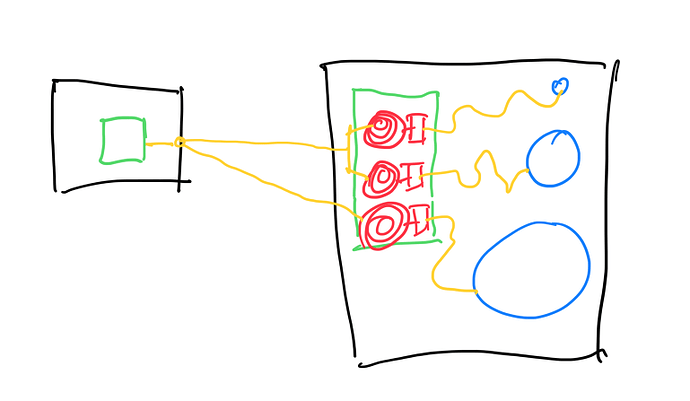Roger that, thanks.
But it does make a difference in a properly designed biwire cable, I.e., + and - conductors spaced (at least) a half-inch apart.
Nope. Bi-wiring doesn’t offer anything more than single wiring of sufficient gauge. Another myth alongside skin effect etc.
Nope, sorry, doesn’t work that way. Any differences caused by conductor spacing are utterly inconsequential to the output signal at the other end.
Passive biwiring also a huge waste of time and money.
Something to think about:
You have a three way speaker. In this speaker you have a crossover. This crossover uses coils and capacitors. The signal has to pass through the coil and the capacitor, otherwise the crossover does not work.
- How long is the wire of the coil?
- What is the impedance and the resistance of the coil?
- What is the distance of the cables in the box going from the crossover to the actual Chassis?
Biwiring definitely looks good. But that is the main reason for it.
In my experience, a typical air-cored coil may have anything from 10 to 30 metres of copper wire in it.
I’ve seen coils range from <0.2 ohm to >1 ohm resistance. Impedance is obviously frequency dependent, but it is orders of magnitude greater than cable impedence. Crossover coils are typically in the milliHenry range. My Canare 4S11 cables exhibit inductances <0.5 microHenries.
For floorstanders, between terminals and tweeter, typically a metre or more.
Many audiophiles place a disproportionate amount of emphasis on what they can see.
Interconnects between components are also a huge concern for many, yet all of the metres of copper track on PCBs and the lead-free solder joints between copper tracks, connectors and components are overlooked. AFAIK, no one uses 6 nines OFC on their circuit boards or component leads.
Use decent quality cables that are well-constructed and sleep easily knowing that all is well in the world.
Also because the crossover is before the driver, the amplifier cannot “understand” what load it will receive and voltage delivery is the same at both sets of terminals, so even passive biamping is a complete waste of money.
If the wire is sufficient then you only need one set of it into a speaker
I know I’m going to deeply regret getting involved with this, but …
The possible benefit that bi-wire gives is that it eliminates the usually shtty jumpers that speaker manufacturers supply with their bi-wire capable speakers. Of course, one could always substitute jumpers of sufficient gauge to also solve the ‘problem’.
Whether such a solution is audible or not is another question.
I am a user of the World’s Best Cables. They are neutral, well made and reasonably priced. They use Mogami cables and should be more rightly referred to as Mogami cables with good connectors. Excellent RF rejection if you’re looking for a cable to use with a SUT.
Jus’ sayin’.
Can you elaborate on that?
Harbeths come with little brass jumper bars, and the owner Alan Shaw, specifically states that all measurements and listening are done with these in place, as they do not alter the sound of the speaker in any way whatsoever.
I think a lot of people are very confused about how electricity works
I mean, i’ve yet to meet a cable that isn’t neutral, outside of a few very weirdly designed and / or flawed cables.
e.g. DNM reson, which simply doesn’t work into anything other than a tiny speaker and with a tiny amp. But then we’re into the whole “sufficient gauge” point again, DNM reson, wasn’t sufficient. Every cable that is, sounds the same.
Thanks, that’s where I was going ![]()
A vaguely insulting and unnecessary comment.
If one says that the gauge of a speaker wire matters, then shouldn’t the gauge of jumpers also matter?
Because jumpers of a different material, as are common on many speakers, are less than optimal?
For resistance, gauge matters with length. Jumpers are of negligible length, effectively.
AJ
The main reason biwiring can have a positive effect is that it eliminates intermodulation distortion between the high and low frequency currents running in a (typical) single conductor.
When biwiring the high frequency current runs in the tweeter leg, the low frequency current runs in the woofer leg. Spacing the two legs a half inch or so apart further minimizes the distortion.
Biwiring has nothing to do with cable gauge, skin effect, terminal jumpers, etc.
With bi-amping perhaps but not with bi-wiring. Half inch spacing? Interesting.
Hmmm. No. If you do passive biwiring the whole spectrum is on both cables. The frequency split is done by the crossover in the speaker. The amplifier does not know which frequencies are on which cable. It sends full range.
Hmmm. Yes. First, when you biwire the crossover is split into two segments after removing the terminal jumpers. Second, Ohms Law. I = E/R or in the case of a speaker I = E/Z.
So while the voltage at the amplifier end is the same for both legs the current is different due to Z being different for each leg.
Z1 = capacitor plus tweeter. Z2 = inductor plus woofer. Different current flows in each leg.
“Intermodulation distortion” is caused by non-linearity of components. I can’t imagine in what conditions a speaker wire can become audibly non-linear…
